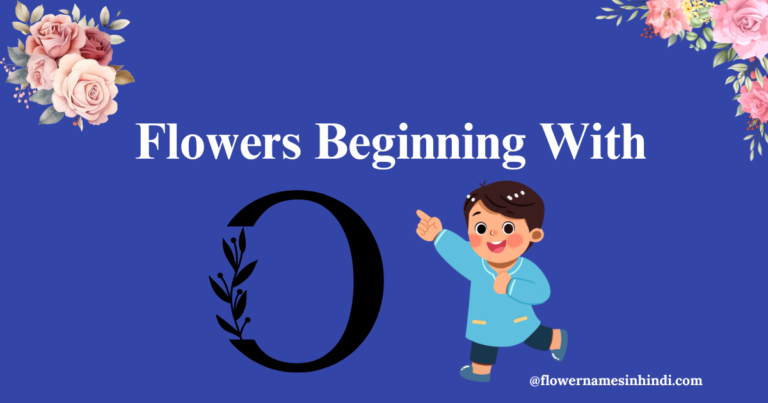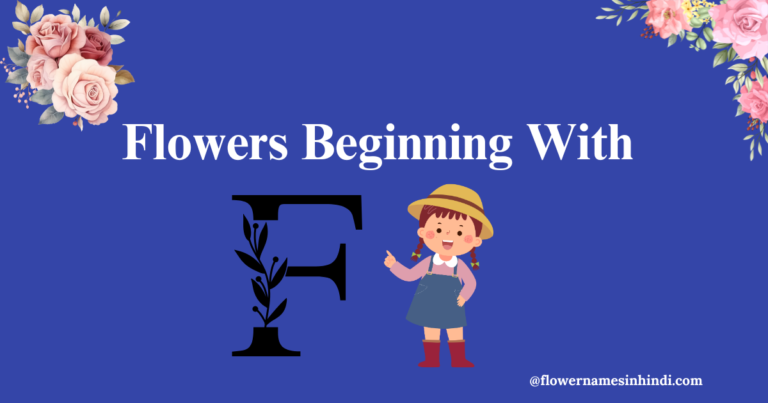14+ Fascinating Flowers That Start with K You Will Love 😍
Can you think of five flowers that start with K? Or maybe just two or three? Take a pause and count! If you can name more than five flowers right away, wow, you must be a true flower enthusiast and have great knowledge! But if not, don’t worry; we have got you covered.
And hey, if you love discovering flowers alphabetically, A to Z, don’t forget to check out our latest blogs on flowers that start with H, I, and J, because every letter has its garden of wonders!
Here are some of the most popular flowers starting with K:
🌼 King Protea
🌼 Kangaroo Paw
🌼 Kerria
🌼 Kalmia
🌼 Kaffir Lily
🌼 Kolkwitzia
King Protea

The King Protea is one of the most admirable flowering plants in the Proteaceae family. It is also known as “Honeypot,” Giant protea, or King sugar bush. King Protea is well known for its large, spiny flowers that can grow up to 12 inches in diameter.
It is the national flower of South Africa and the name of the national cricket team, “the Proteas.” This admirable flower has a long vase life, making it an excellent choice for ornamental arrangements.
| Scientific Name | Protea cynaroides |
| Blooming Time | Throughout the year |
| Symbolism | Courage |
| Number of Species | One main species with many varieties |
| Native To | South Africa |
Kiss-Me-Over-the-Garden-Gate

Kiss-Me-Over-the-Garden-Gate is a unique and rare flowering plant belonging to the Polygonaceae family. The other common name of this delicate flower is “Princess-feather.” It is a tall, annual flower that gives long and bending stems with clusters of pink or white flowers
According to mythologies, the flowers can relieve pain, eliminate blockages, and thin the blood. Their leafy stems can also heal hernias. Tympanites, cancer, ulcers, and hepatitis can all be treated with an infusion of ripe fruits.
| Scientific Name | Persicaria orientalis |
| Blooming Time | Late summer to fall |
| Symbolism | Romance and Affection |
| Number of Species | One main species with different variants |
| Native To | Unclear |
Kerria | Flowers That Start With K
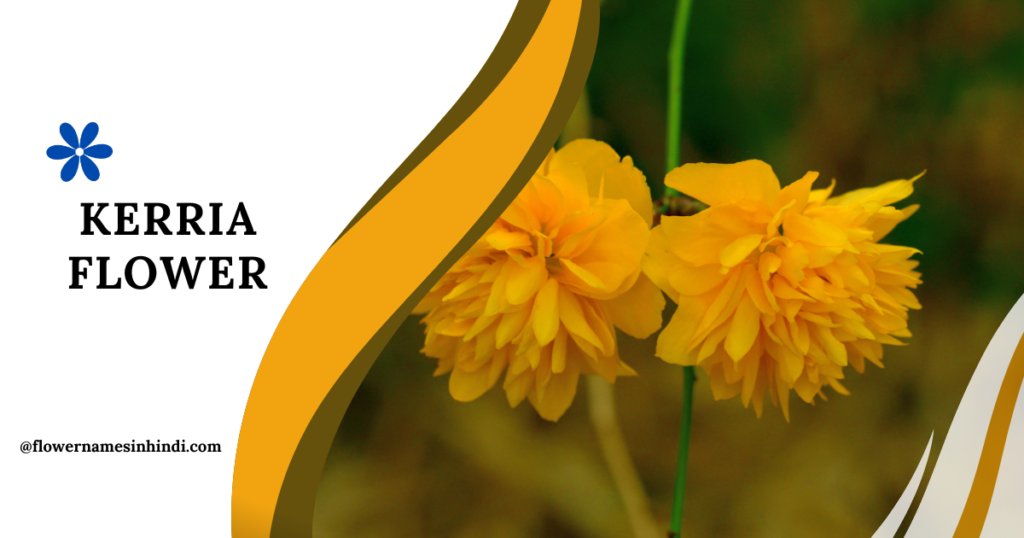
Japanese Rose is another famous name for the outstanding flower Kerria. It is a graceful deciduous shrub that belongs to the Rose family Rosaceae. It produces vibrant yellow flowers resembling the Roses.
Kerria flower is named after Scottish gardener William Kerr, who presented the Japanese kerria ‘Pleniflora.’
Growing in organic-rich soil, partial shade from full sunlight, is best to avoid burning the flowers. But, You have to trim it after flowering to maintain its health.
| Scientific Name | Kerria japonica |
| Blooming Time | March to May |
| Symbolism | Purity and Wealth |
| Number of Species | Approximately 30 species |
| Native To | Japan and China |
Kochia
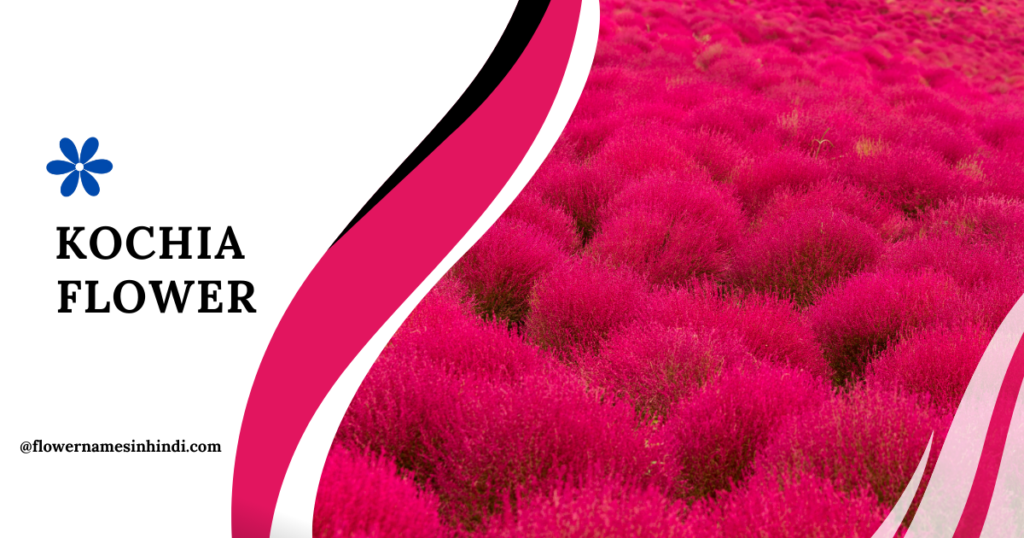
Kochia is a unique, colorful bush, also called a burning bush due to its flame-like color. It belongs to the Amaranthaceae. Family. It is an exotic shrub with bright green flowers that turn reddish in the autumn.
The other common names of Kochia are Mexican fireweed and Summer cypress It is an annual plant frequently used as an ornamental plant in gardens.
Kochia wants full sunlight and well-drained soil to grow best. It is a low-maintenance plant. Its lifespan is approximately 1 year.
| Scientific Name | Kochia scoparia |
| Blooming Time | Summer to fall |
| Symbolism | Adaptability and Resilience |
| Number of Species | 6-10 Species |
| Native To | Eurasia |
Knautia arvensis | Flowers that start with K

Knautia arvensis, or “Field Scabious,” belongs to the Caprifoliaceae (Honeysuckle) family. It is a herbaceous perennial flowering plant that produces blue to mauve flowers. Knautia arvensis can grow in moist soil, slightly alkaline ans under full sunlight.
You can find it along field edges, roadsides, and meadows, especially in areas with chalk bedrock. Removing wasted flowers will promote new growth and maintain the plant’s attractiveness.
The entire plant is bitter and slightly urinary stimulant. Cuts, burns, and bruises can be treated externally with an infusion, also used as a blood purifier.
| Scientific Name | Knautia arvensis |
| Blooming Time | May to August |
| Symbolism | Protection |
| Number of Species | 55-60 Species |
| Native To | Asia and Europe |
Kolkwitzia Amabilis

Kolkwitzia Amabilis, or Beauty Bush, is a fascinating and attractive shrub from the Caprifoliaceae family. It is the only species in the genus “Kolkwitzia.” In China, it is famous as “wèi shí”. It has bent branches that have bright pink, bell-shaped flowers.
They require well-drained soil having full sunlight or mild shade exposures. This low-maintenance shrub needs less pruning.
| Scientific Name | Kolkwitzia amabilis |
| Blooming Time | Late Spring to early Summer |
| Symbolism | Grace and Charm |
| Number of Species | 1 Specie |
| Native To | China |
Kniphofia Uvaria
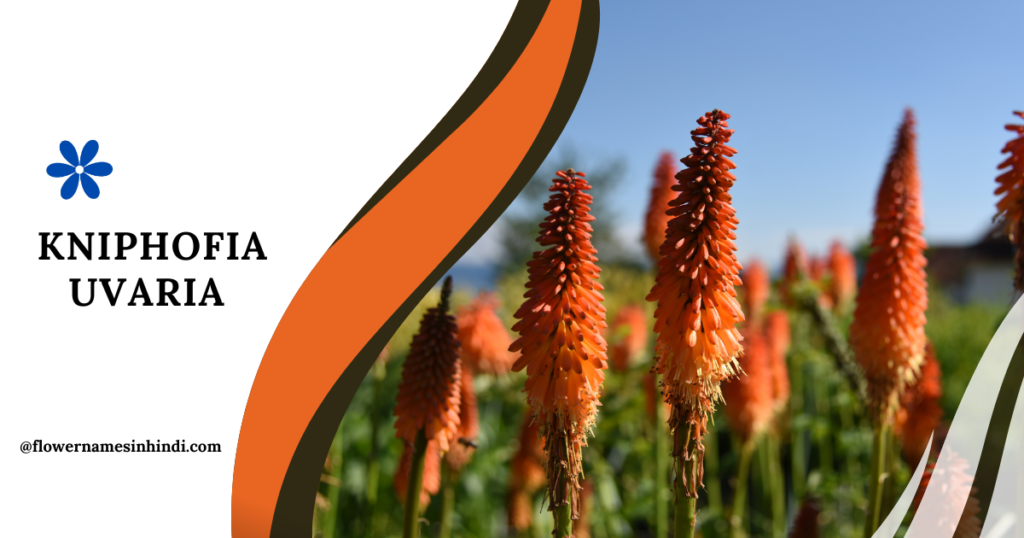
Kniphofia Uvaria, also known as “Tritom,” “Red Hot Poker,” or “Torch Lily,” is a perennial flowering plant that belongs to the Asphodelaceae family.
They require well-drained soil having full sunlight or mild shade exposures. Kniphofia is named after Johann Hieronymus Kniphof, a German physician and botanist who lived in the 18th century.
Kniphofia Uvaria can tolerate drought; it does not like dry spells and requires frequent watering. After blooming, trim back the flower spikes to promote new growth.
| Scientific Name | Kniphofia uvaria |
| Blooming Time | Spring to fall |
| Symbolism | Luck |
| Number of Species | 73 Species |
| Native To | South Africa |
Kalmia Latifolia | Flowers Starting With K
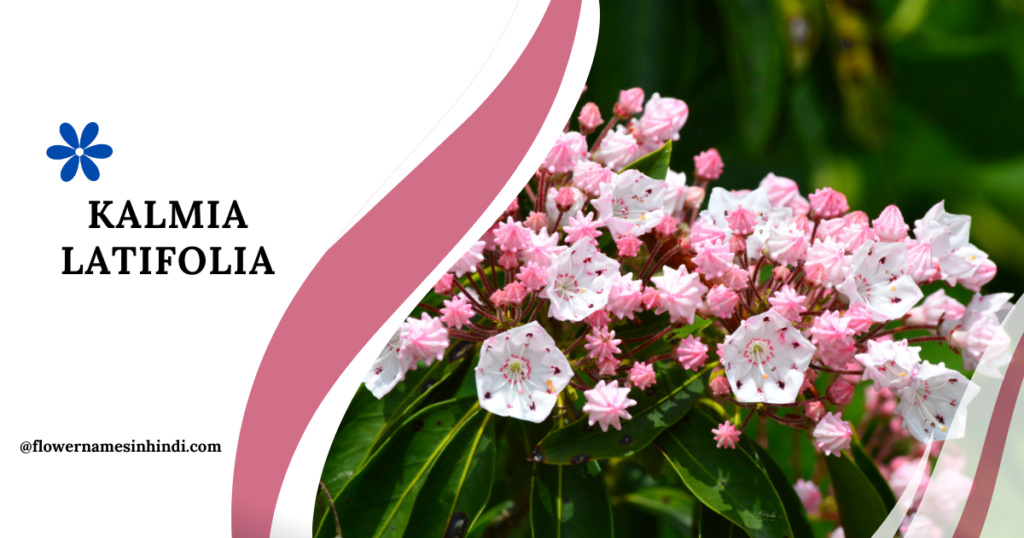
Kalmia Latifolia, an elegant flowering plant, belongs to the Ericaceae family. It is commonly known as “Mountain Laurel,” “Spoonwood,” or “Calico-bush.” It is the official state flower of Pennsylvania and Connecticut. .
The plant grows naturally on rocky slopes and in mountain forests. It grows well in acidic soil, preferring a pH of 4.5 to 5.5. Kalmia latifolia is a pollinator plant that attracts butterflies and hummingbirds.
| Scientific Name | Kalmia latifolia, |
| Blooming Time | Late spring to early summer |
| Symbolism | Perseverance and Amobtion |
| Number of Species | Approximately 80 Species |
| Native To | Eastern United States |
Knautia macedonica

Knautia macedonica is an inspiring species of flowering plant related to the Caprifoliaceae family. It is a herbaceous perennial that gives rise to small, red crimson pincushion flowers on long stems.
Knautia macedonica grows as an ornamental plant. It is an exceptionally hardy and low-maintenance plant, down to -20°C and below, but requires a sunny spot on neutral or alkaline soil.
Regularly deadhead the flowers to extend blooming and keep the plant thriving. This plant also thrives in full sunlight and well-drained soil.
| Scientific Name | Knautia macedonica |
| Blooming Time | June to September |
| Symbolism | Sentiments and Endurance |
| Number of Species | 55-60 Species |
| Native To | Southeastern Europe |
Kosteletzkya | Flowers Beginning With K

The Kosteletzkya is a not-so-famous but charming and unique flower that belongs to the Malvaceae family. It has pink, hibiscus-like flowers that appear from summer to autumn. This flower needs regular watering and can benefit from covering to help preserve humidity.
Regularly deadheading squandered blooms will keep the flowers blooming. They grow best in sunny, humid, well-drained, but moisture-retentive conditions. Its sensitive grey-green, angular leaves can grow up to 3 to 6 feet and have a width of 2 to 4 feet.
| Scientific Name | Kosteletzkya |
| Blooming Time | Summer to fall |
| Symbolism | Admiration |
| Number of Species | 27 Species |
| Native To | North America |
Kaffir Lily

The Kaffir Lily, well known as the “Natal lily” or “Bush lily”, is a delightful flowering plant thay belongs to the Amaryllidaceae family. It is a charming flower that blooms well in humid and shaded areas.
They have vivid, funnel-shaped cute flowers in bold, vibrant red, orange, and pink shades. Its fruit is a dark red round berry almost 5 cm in diameter, and It is toxic for cats as it contains a small amount of a poisonous compound, lycorine.
These plants are almost evergreen; although their leaves will turn black in cold winds, they will not be harmed. Though they originate from South African stream banks and humid water meadows, they can thrive at -10°C.
| Scientific Name | Clivia miniata |
| Blooming Time | Late winter to early spring |
| Symbolism | Passion and Rebirth |
| Number of Species | Around 6 Species |
| Native To | South Africa |
Knautia
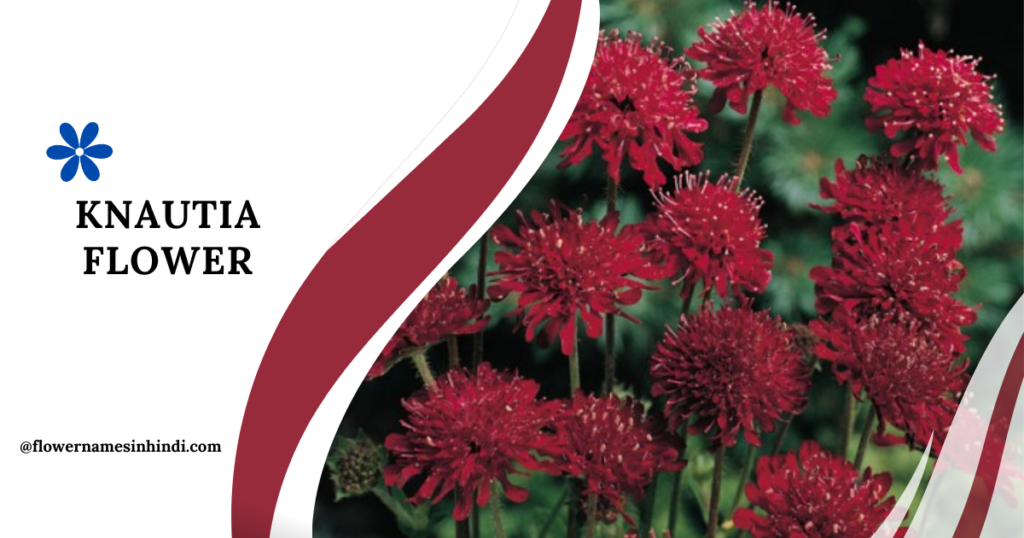
The Knautia is a charming perennial flowing plant that belongs to the Caprifoliaceae Family. It is famous for its tiny, soft, thread-like flowers available in light pink, red, and dark purple shades.
Knautias thrive best in full sunlight and wet, well-drained soil. They can grow up to 80 cm to 1 m. These beautiful perennials can easily attract bees and butterflies and support a healthy ecosystem in your garden.
| Scientific Name | Knautia |
| Blooming Time | Summer to fall |
| Symbolism | Warmth |
| Number of Species | 55 Species |
| Native To | Western and Central Asia, and Siberia |
Kangaroo Paw
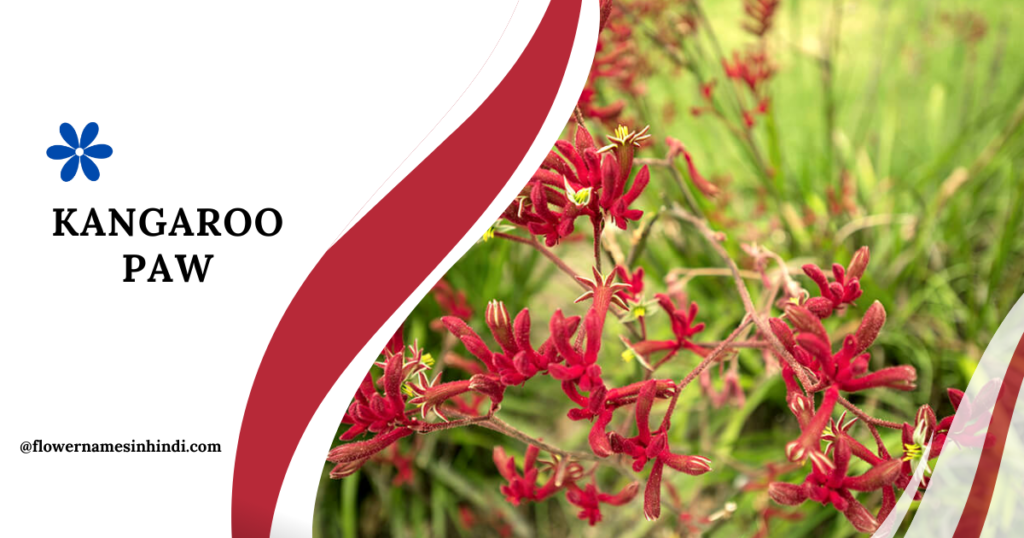
Kangaroo Paw is a fascinating plant that belongs to the Haemodoraceae family. It is amed because of its shape resembling a kangaroo’s paw; in some areas, it is also called “Catspaw”.
Kangaroo paws are in high demand as houseplants and cut flowers. The red and green kangaroo paw is Western Australia’s floral symbol. The conical red, orange, yellow, or green flowers , are covered in small hairs, which give them a rich luxurious touch.
| Scientific Name | Anigozanthos |
| Blooming Time | Spring to Summer |
| Symbolism | Uniqueness and Individuality |
| Number of Species | 11 Species |
| Native To | Southwestern Australia |
Kalmia | Flowers Beginning With K
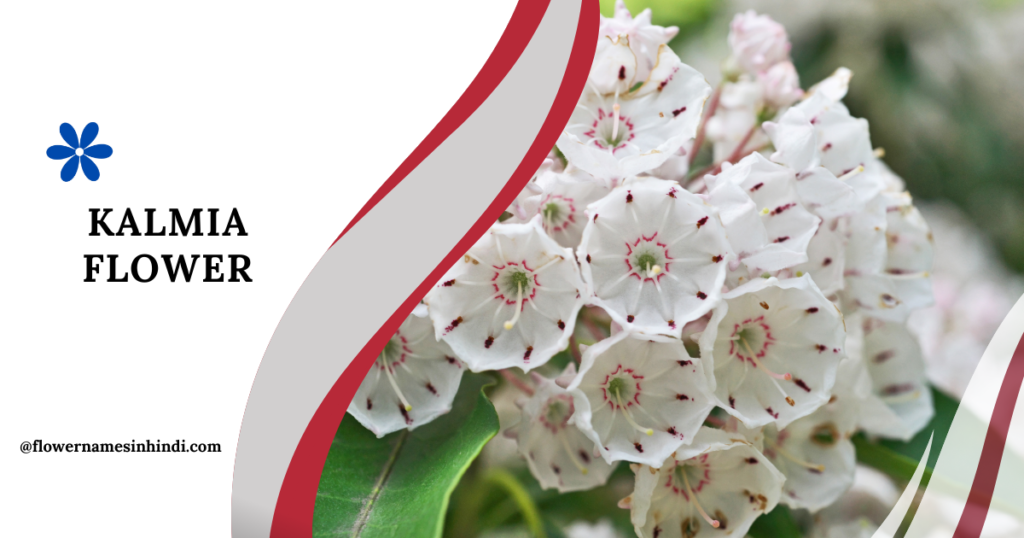
Kalmia, commonly known as Mountain Laurel, is a beautiful and charming evergreen shrub that belongs to the Ericaceae family. Linnaeus named Kalmia to honour his friend, the botanist Pehr Kalm, who gathered it in North America in the 18th century.
Its flowers come in light pink or white coloured clusters and have a star-like shape. They can bloom in acidic, moist, well-drained soil and partially to full shade.
| Scientific Name | Kalmia |
| Blooming Time | May to mid-July |
| Symbolism | Innocence |
| Number of Species | Almost 10 Species |
| Native To | North America and Cuba |
Conclusion
So, that’s all Friends!
Exploring flowers that start with K reveals their beauty, fascinating facts, and healing powers. Nature never fails to amaze us, and every bloom, including these flowers starting with K, adds a touch of serenity and joy to our lives.
If you enjoyed this floral adventure, don’t keep it to yourself, share this blog and flowers name in hindi with your friends and let them discover these stunning blooms too!
Stay tuned for our next exciting blogs as we continue our alphabetical journey, uncovering the floral wonders of the remaining letters!
Related Articles:


